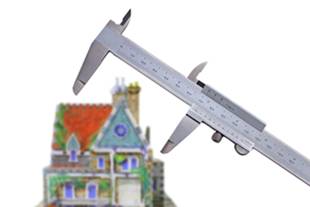Classic quality control (QC)
We will examine this approach using a mini case study.

The Sausage Factory
Family Foods Ltd. makes sausages in its factory. It buys meat from the local farmers, sausage skins from the local supplier and packing and packaging materials from a national wholesaler. It produces sausages in batches, and then sells them to local shops and catering establishments.
There is considerable involvement of QC staff in the production process. They are responsible for quality and can over-rule production and marketing departments within the company. They can also reject substandard products that have already been manufactured.
Who do you think the QC department is RESPONSIBLE to? Who does the head of the quality control department report to?
Quality controllers are required to check several aspects of the production process.
- Raw materials. All of this has to be sampled and checked and analysed. This may be done in a laboratory by chemists. Materials cannot be used until they are approved. Thus there has to be a Quarantine Store, where items are held before clearance. Invoices cannot be paid by accounts until there is clearance from the QC department.
- Packing materials and packaging. Samples are checked against a specification, which may be time consuming and costly.
- Work-in-progress. Batches of sausage meat are made, which are be checked before use. Records are kept so that the batches of the final product can be traced back to a batch made on a certain day if there are found to be problems.
- Finished product. Samples are checked before being passed for sale. Checks are made on weight, physical quality of the product and the packaging, and the bacteriological quality of the sausages. Only when all these tests are complete can a batch of sausages be passed for sale. During this waiting period they are kept in expensive cold storage.
A significant area of the factory is taken up by storage areas and stock levels may be relatively high at certain periods.
 Thus quality checking is done through sampling and analysis, the checking being done by an 'in house', but independent QC department. The process often uses Statistical Process Control (SPC), associated with Deming, to ensure that finished products fall within acceptable tolerance levels, such as those based on weight and size. There is no attempt by production and QC to improve quality together, though production aims to get as many 'passes' as possible. Classic QC is expensive and inefficient. Checks are made after the event:
Thus quality checking is done through sampling and analysis, the checking being done by an 'in house', but independent QC department. The process often uses Statistical Process Control (SPC), associated with Deming, to ensure that finished products fall within acceptable tolerance levels, such as those based on weight and size. There is no attempt by production and QC to improve quality together, though production aims to get as many 'passes' as possible. Classic QC is expensive and inefficient. Checks are made after the event:
- after ordering raw materials and on their delivery
- after the making of a batch
- after the production of the final packs.
The same quality faults tended to occur again and again. There may be no incentive for departments to work together to improve quality and reduce costs, so the potential advantages of team working are ignored.

In effect, a company is paying workers to make defects and then to correct them. Quality comes not from inspection, but from improvement in the process.
Mary Walton, Deming Management Method
Given the drawbacks of traditional quality control, it is not surprising that there has been a movement to the introduction of quality assurance processes and philosophy.
